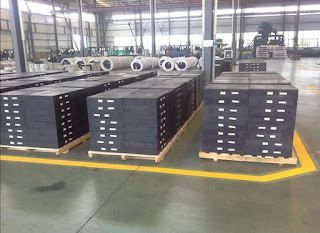Understanding Bridge Bearings: Importance and Types
Bridge bearings are an essential component of bridges, ensuring their safety and functionality. They are an often-overlooked aspect of bridge design, but they play a critical role in supporting the structure and accommodating various movements and loads. In this article, we will discuss the importance of bridge bearings, the different types available, and their functions.
The Importance of Bridge Bearings
A bridge is a complex structure that needs to be designed and built to withstand various loads and movements, including the weight of the structure, live loads such as vehicles, temperature changes, and seismic events. As these loads and movements can cause the bridge to deform or move, bridge bearings are used to facilitate their accommodation and ensure that the structure remains stable.
Bridge bearings allow the bridge to move and deform in response to these loads and movements without causing damage or failure. They also help distribute the loads and forces acting on the bridge, reducing stress and ensuring that the structure remains safe and functional. Without bridge bearings, bridges would be much less durable and have a much shorter lifespan.
Types of Bridge Bearings
There are several types of bridge bearings, each with their own unique properties and uses. The following are the most common types of bridge bearings:
Fixed bearings: Fixed bearings are rigid supports that do not allow any movement or rotation of the bridge. They are used to support short span bridges, such as footbridges, where the loads and movements are relatively small.
Expansion bearings: Expansion bearings are designed to accommodate the thermal expansion and contraction of the bridge caused by temperature changes. They allow the bridge to expand and contract without damaging the structure or causing excessive stress.
Roller bearings: Roller bearings consist of a cylindrical roller that allows the bridge to move horizontally and vertically. They are typically used in long-span bridges where there is a need for large movements.
Elastomeric bearings: Elastomeric bearings are made of rubber or other elastomeric materials that can deform and absorb the forces acting on the bridge. They are used to accommodate small to moderate movements and are commonly found in medium to large span bridges.
Pot bearings: Pot bearings consist of a steel pot that contains a sliding surface, usually made of PTFE or other low-friction materials, that allows the bridge to move horizontally and rotate. They are used to accommodate large movements and are commonly found in long-span bridges.
Functions of Bridge Bearings
The main function of bridge bearings is to facilitate movement and deformation of the bridge while ensuring its stability and safety. They accomplish this by providing support and distributing the loads and forces acting on the structure. In addition to this, bridge bearings also provide the following functions:
Reduce stress: Bridge bearings help reduce stress on the bridge by distributing the loads and forces acting on the structure. This helps prevent the structure from experiencing excessive stress that can lead to deformation or failure.
Absorb energy: Bridge bearings made of elastomeric materials can absorb energy from the movements and loads acting on the structure, further reducing stress and ensuring the bridge's safety.
Facilitate maintenance: Bridge bearings can be easily replaced or repaired, making maintenance of the bridge easier and less costly.
Conclusion
Bridge bearings are a crucial component of bridge design that ensures the stability, safety, and functionality of the structure. There are several types of bridge bearings available, each with their own unique properties and uses. By understanding the importance and functions of bridge bearings, designers and engineers can ensure that the bridges they design are safe, durable, and reliable.

评论
发表评论